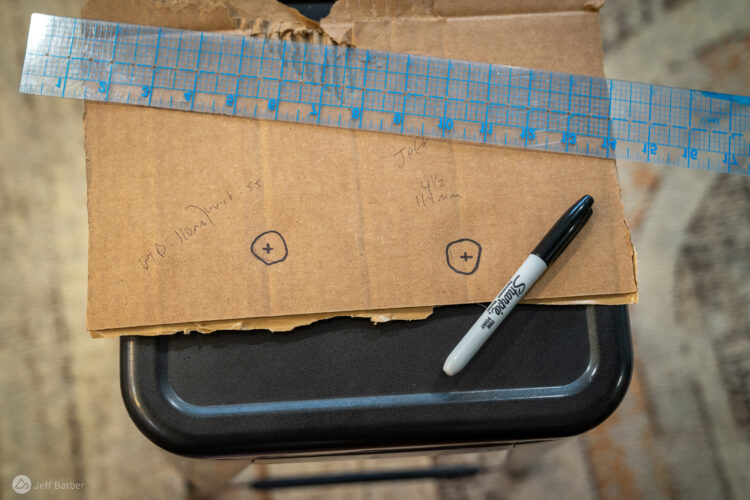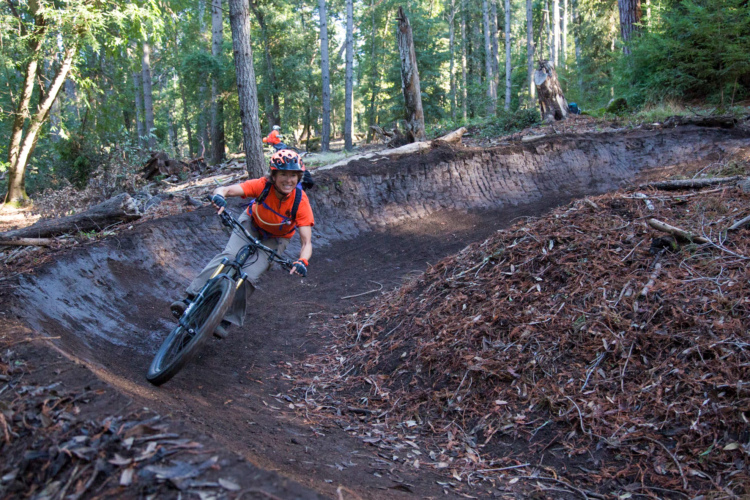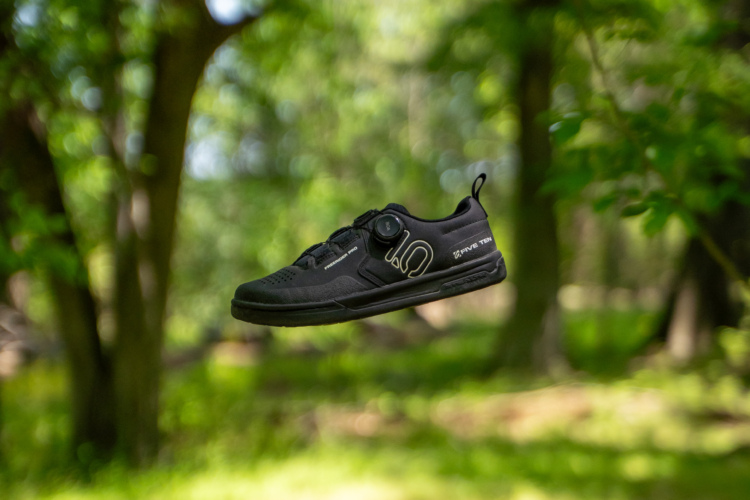
Forget everything you know about the WTB Rocket mountain bike saddle. Though the name has been around since about 2002, the Rocket Fusion Form saddle is a complete refresh, with new saddle dimensions, a revamped base, and a handy feature for hike-a-bike. An upward-scooped rear end gives riders a little something to push against while keeping them firmly in position for the climbs.
WTB Rocket MTB saddle specs
- Dimensions: 145x260mm
- Sit bone range: 110-125mm
- Weight: 254g (titanium rails)
- Price: $49.95 to $119.95
- Buy from WTB and Amazon

A shorter length and a narrower sit bone range
Following a trend that’s been a long time in the making, the WTB Rocket is 5mm shorter than its predecessor. Sean Madsen, who designed the new Rocket, helped kickstart the current short-saddle trend, and while a 5mm reduction may not sound like a lot, it makes a big difference in terms of maneuverability for mountain biking. It also encourages the rider to rotate their pelvis forward, which improves comfort in conjunction with a longer center channel.
At the time of launch, the WTB Rocket is only being offered in a medium width, which the brand now defines as sit bones between 110-125mm wide. (Learn how to measure your sit bones at home.) “We’re moving towards a new and more scientific version of our ‘Fit Right’ system,” James Heaton, Global PR manager for WTB, told me. “These three new saddles, [the Rocket, Solano, and Solano SL], are the first that will fall into that more accurate fitting system.” If the Rocket proves popular with consumers, the brand will consider adding additional width options.
My 114mm sit bone width falls right within the updated range, and I found the Rocket offers excellent support and comfort.

Fusion Form base is tuned for more flex
WTB continues to roll out its Fusion Form tech to the saddle lineup, and with this update, the Rocket gets a base with a softer tune. The Comfort Zone cutout in the base is larger and has a new shape as well. Combined with the titanium rails, the WTB Rocket feels great through rough trail sections without feeling tippy or wobbly. Less expensive (and heavier) versions of the saddle are available with steel, chromoly, and stainless steel rails. A carbon-rail version will not be available at launch.
Designed for “comfort and support” on long mountain bike rides, the WTB Rocket features thicker padding compared to other saddles in the brand’s lineup. Looking at the saddle, however, you wouldn’t guess it. I tested the Rocket back-to-back with another WTB saddle with medium padding, and the difference is apparent. I’m generally OK with thin padding, and even no padding for some rides, but given the choice, I’ll take the WTB Rocket with thick padding over medium padding all day long.
The WTB Rocket is heavier than the saddle previously known as “Rocket” by almost 40g. That’s an 18% increase, and with the change, the brand is positioning the Rocket for eMTB and enduro riding. Based on my tests, it works great for trail riding too, and I’d happily run the Rocket on my gravel bike.


The WTB Rocket has a hidden feature that’s brilliant
The new WTB Rocket has a hidden handle integrated into the base. It’s designed to assist in hike-a-bike situations, and is also a nod to eMTBs where bike weights are heavier and an extra handhold is helpful. Of course, not all dropper posts are happy with a saddle lift, so you may or may not want to use the handle with your bike.

How does it compare to other MTB saddles?
I actually spent more time this spring testing another new WTB saddle, the Solano. The Solano features medium padding and is designed to fit a similar range of sit bone widths, but with a different shape and a much shorter, 240mm length. Over the course of a few big rides in Pisgah, the WTB Solano felt fine, if a little firm for my liking. Switching to the Rocket, I found a much more comfortable ride.
The WTB Koda has been my favorite saddle from the brand for some time, but I think the new Rocket may have it beat by a small margin. The two saddles have pretty similar dimensions, but the Rocket just feels a little more comfortable.
Comparing the WTB Rocket to other brands, I’d say the closest competitor is the Ergon SMC Core, which is a saddle I love. Here again, the dimensions are very similar — within just a few millimeters of one another for both length and width. I give a slight edge to the padding in the Ergon saddle, which feels slightly springier.

Pros
- Comfort thanks to thick padding and a tuned base
- Wide price range to suit most budgets
- The dimensions offer a good fit for me personally
Cons
- Thick padding adds weight that might not be necessary for everyone
- Some may prefer a shorter overall length
Bottom line
The WTB Rocket Fusion Form saddle is a great choice for comfort on long rides and rough rides alike.
Update: A previous version of this review referred to the base material as Fusion Fiber. The base actually features a technology that WTB calls Fusion Form.





















1 Comments
2 weeks ago